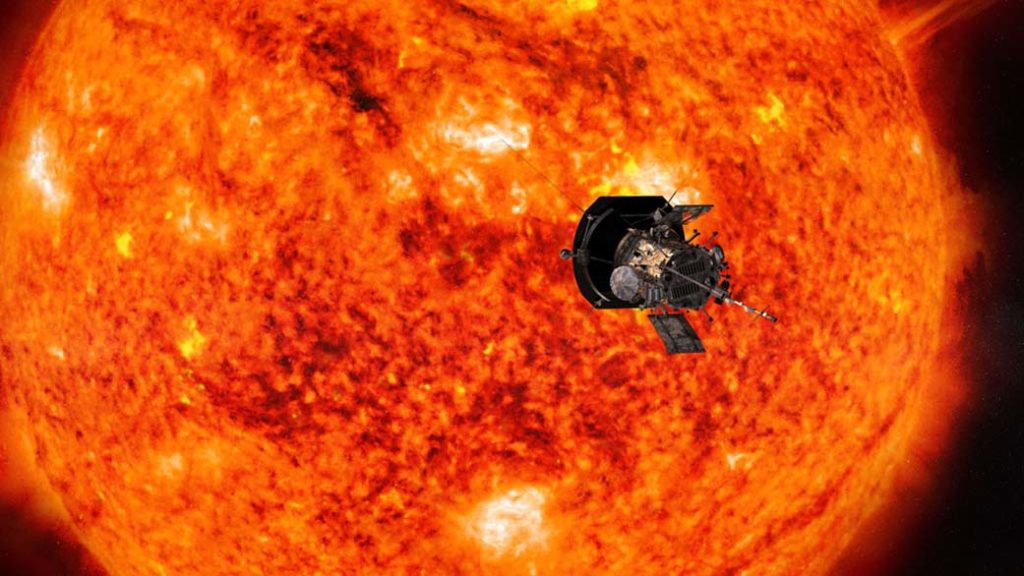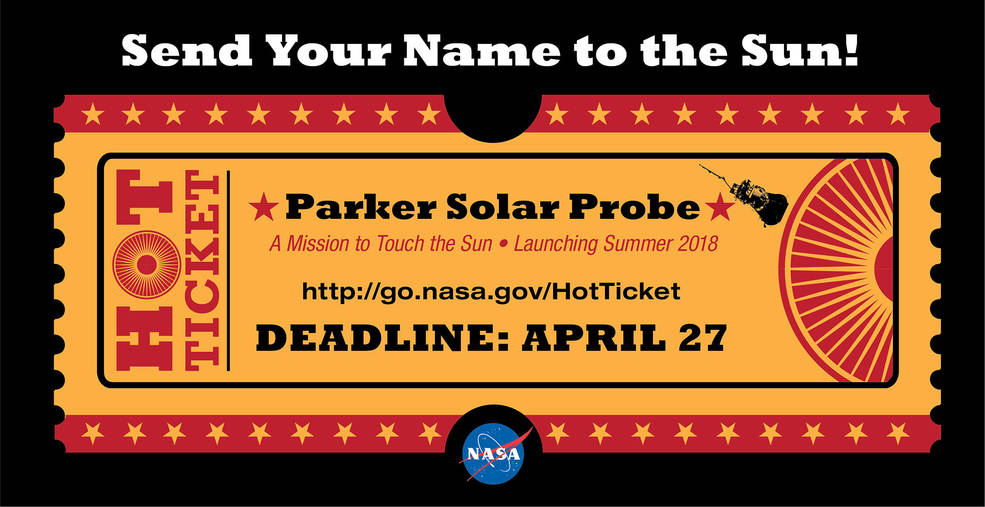 |
|
Illustration of the Parker Solar Probe
spacecraft approaching the Sun. Credits: Johns Hopkins University Applied Physics Laboratory |
inviting the public from all across the world to send their names to touch the
sun on the agencies groundbreaking Parker Solar Probe mission
launching in summer 2018.
Probe will fly ‘Where no Earth probe has gone before!’
atmosphere to within about 4 million miles from the surface of our stars
unbearable scorching surface and that keeps us all alive.
atmosphere, facing brutal heat and radiation conditions — and your name will go
along for the ride,” says NASA.
carbon-composite shield will protect Parker from beyond blow torch temperatures
reaching nearly 2,500 F as it studies the sun with a suite of four science
instruments.
your name placed on a microchip installed on Parker is available only for the
next few weeks.
your very cool looking boiling ‘Hot Ticket.’
Be aware that it might take a few hours to get your confirmation email.
Klingon agents are scouting about on high alert.
 |
|
Send your name to the
Sun, via a microchip installed on NASA’s upcoming Parker Solar Probe mission. Submissions will be accepted until April 27, 2018. Credits: NASA |
inviting you to ride along in this short video invitation:
of NASA, invites you to send your name where it’s never gone before: the Sun,
by way of NASA’s Parker Solar Probe. Credits: NASA’s Goddard Space Flight
Center/Rich Melnick
experience?
to trace how energy and heat move through the solar corona and to explore what
accelerates the solar wind as well as solar energetic particles. The mission
will revolutionize our understanding of the Sun, where changing conditions can
spread out into the solar system, affecting Earth and other worlds,” says NASA.
Parker Solar Probe will launch on a United Launch Alliance triple barrel Delta
IV Heavy rocket in August 2018
the Solar Probe Plus to
astrophysicist Eugene Parker, S. Chandrasekhar Distinguished Service Professor
Emeritus, Department of Astronomy and Astrophysics at the University of Chicago.
for a living individual.
has never explored before,” said Thomas Zurbuchen, the associate administrator
for the Science Mission Directorate at NASA Headquarters in Washington. “This
mission will answer questions scientists have sought to uncover for more than
six decades.”
ULA, Boeing, Lockheed Martin, Orbital ATK and more space and mission
reports direct from the Kennedy Space Center and Cape Canaveral Air Force
Station, Florida.
Earth and Planetary science and human spaceflight news: www.kenkremer.com –www.spaceupclose.com –
twitter @ken_kremer – ken
at kenkremer.com

